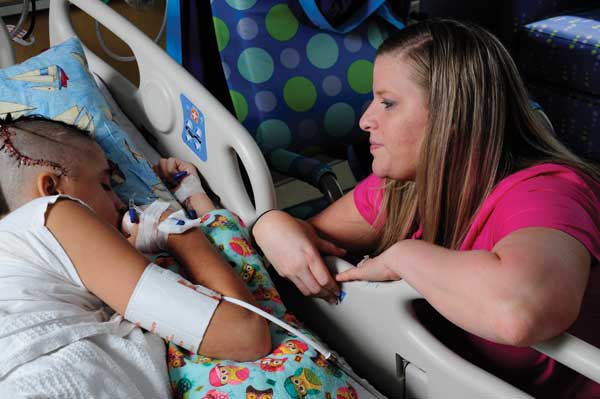A Clinical Nurse Leader Streamlines Communication for Patients and Staff
by Jennifer Walker

![]() At All Children’s Hospital, surgical neuroscience patients are often moved among the ICU, OR, radiology, and other units for care—a necessary course of action that once came with two disadvantages. Children and their families weren’t always able to build relationships with their changing rotation of caregivers, and physicians and nurses across units had a hard time communicating with each other.
At All Children’s Hospital, surgical neuroscience patients are often moved among the ICU, OR, radiology, and other units for care—a necessary course of action that once came with two disadvantages. Children and their families weren’t always able to build relationships with their changing rotation of caregivers, and physicians and nurses across units had a hard time communicating with each other.
“There wasn’t anyone overseeing the entire patient over a consistent period of time,” says Kentlee Battick, MSN, RN, CCRN, CNL, All Children’s first and only Clinical Nurse Leader (CNL), who now bridges this gap. She follows neuroscience patients from admittance until discharge, offering continuous education and support to children and their families and streamlining staff communication across departments.
The Clinical Nurse Leader position, launched in April at All Children’s, is the first new role for nurses that has been introduced in the last 35 years, according to the American Association of Colleges of Nursing. CNLs are popular in Veterans Affairs (VA) hospitals, Battick says, but CNLs who work in pediatrics are rare.
At All Children’s, Battick, who carries between two and 15 young patients on her caseload, typically begins and ends her days by going on rounds with staff across units. Physicians and nurses can rely on her for quick updates about all neuroscience patients, and patients and families count on her to answer questions and assist with bedside procedures.
According to Melissa Macogay, BSN, RN, CCRN, director of the Pediatric ICU and the Surgical Neuroscience Unit, “We’re also hearing back from our families that there is a benefit to having a point person who can give them an idea of what to expect in the next 24 or 48 hours.”
Carolyn Carey, MD, MBA, Medical Director of the All Children’s Neuroscience Institute and Clinical Practice Director of Pediatric Neurosurgery and Associate Director of Trauma at All Children’s Hospital, says that one of her challenges as a physician was finding enough time to talk to staff and patients throughout the day.
“We do try to make rounds, but then we have to get to the OR, or we have clinic,” she says. “It was hard to communicate with the nurses on other floors or the physicians in other units. Kentlee has really solidified that connection for us.”
Carey thinks that more departments could benefit from having CNLs who can improve communication among staff in various specialties. “It’s a great direction for nursing to go in,” she says.